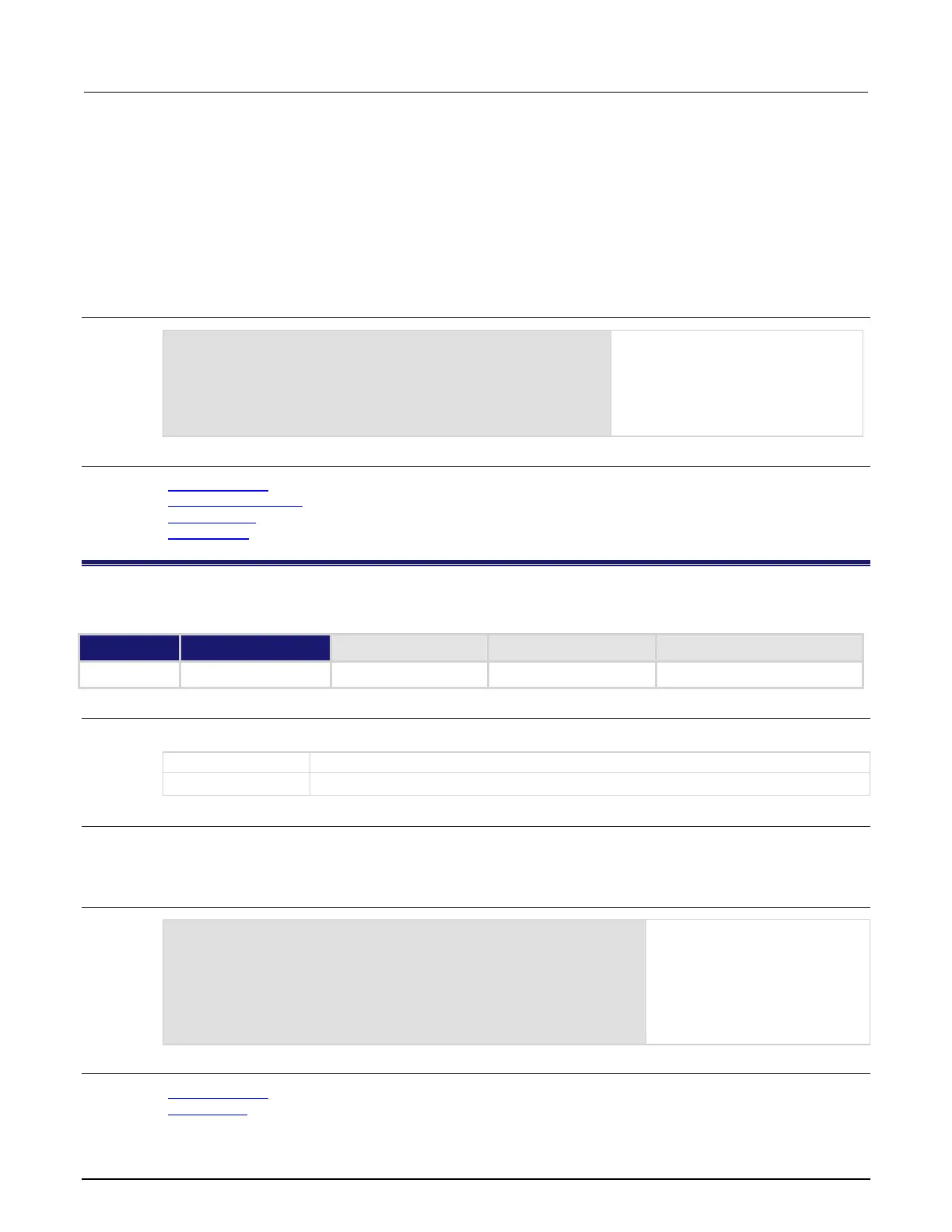8: TSP command reference Model DMM7510 7½ Digit Graphical Sampling Multimeter
8-358 DMM7510-901-01 Rev. B / May 2015
A maximum of 10 format specifiers can be used for a maximum of 10 return values.
If formatString is not provided, the command returns a string that contains the data until a new
line is reached. If no data is available, the Model DMM7510 pauses operation until the requested data
is available or until a timeout error is generated. Use tspnet.timeout to specify the timeout period.
When the Model DMM7510 reads from a TSP-enabled remote instrument, the Model DMM7510
removes Test Script Processor (TSP
®
) prompts and places any errors or events it receives from the
remote instrument into its own event queue. The Model DMM7510 prefaces events and errors from
the remote device with Remote Error, followed by the event number and description.
Example
tspnet.write(deviceID, "*idn?\r\n")
print("write/read returns:", tspnet.read(deviceID))
Send the "*idn?\r\n" message to
the instrument connected as
deviceID.
Display the response that is read from
deviceID (based on the *idn?
Also see
tspnet.connect() (on page 8-354)
tspnet.readavailable() (on page 8-358)
tspnet.timeout (on page 8-360)
tspnet.write() (on page 8-364)
tspnet.readavailable()
This function checks to see if data is available from the remote device.
Type TSP-Link accessible
Affected by Where saved Default value
Usage
bytesAvailable = tspnet.readavailable(connectionID)
The number of bytes available to be read from the connection
The connection ID returned from
Details
This command checks to see if any output data is available from the device. No data is read from the
instrument. This allows TSP scripts to continue to run without waiting on a remote command to finish.
Example
ID = tspnet.connect("192.0.2.1")
tspnet.write(ID, "*idn?\r\n")
repeat bytes = tspnet.readavailable(ID) until bytes > 0
print(tspnet.read(ID))
Send commands that will create
data.
Wait for data to be available.
Also see
tspnet.connect() (on page 8-354)
tspnet.read() (on page 8-357)
